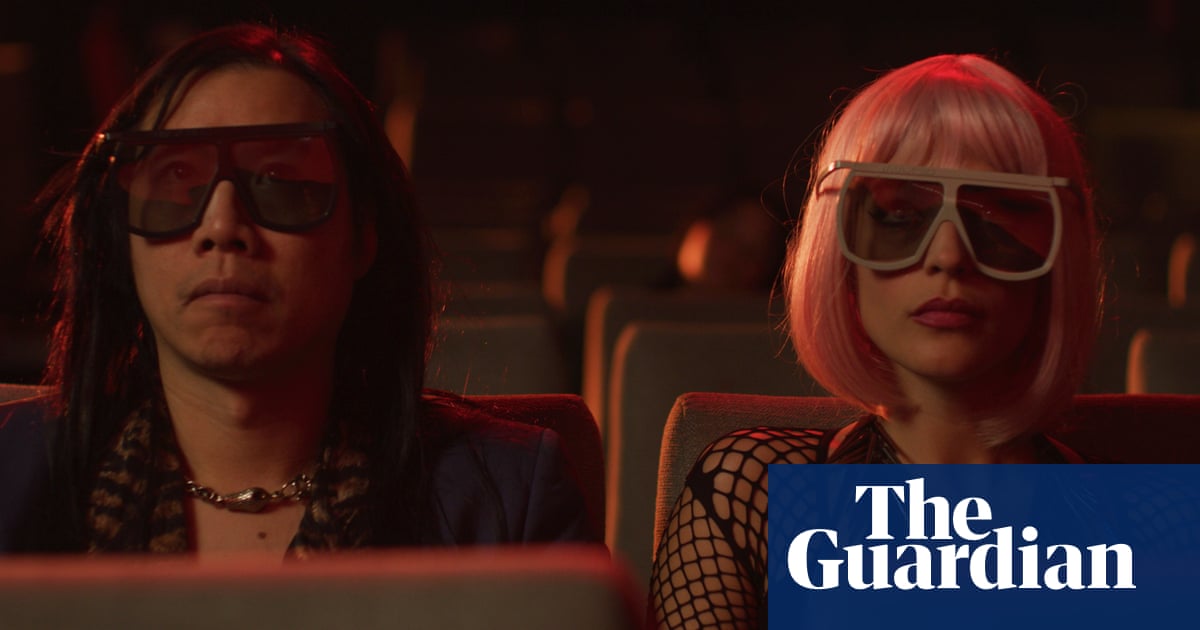
The last time I saw Steve Booth was in September 2019, outside the Curzon cinema, where he worked, on Shaftesbury Avenue, London. We had met to talk about End Credits, a martial-arts short film we had written, and that he was due to begin shooting. But on that occasion, we barely discussed the film, drifting instead into life’s bigger business: his attempts to move out of his artists’ squat, his mum’s recent illness, my dad’s death. Moseying outside, still chatting, we agreed that art – and the struggles to make it happen – could fit in somewhere amid all of this. We just weren’t sure where. That slanted smile split his face and he gave me a hug. Then I sloped off into Soho’s bleary lights.
Just over a year later, Steve was dead, at the age of 44. He caught Covid in January 2021 and, after remaining nearly symptomless for several weeks, died suddenly overnight. His lungs were totally ravaged. He had a combination of what is known as a cytokine storm, where the body’s immune system attacks itself, and silent hypoxia. I was floored. It didn’t seem possible that this could happen to someone as exuberant as Steve. But I wasn’t alone in disbelief and grief. A few weeks later, those who knew Steve made space in their lockdown schedules for his Zoom wake. Cue several hours of anecdotes about the beautiful havoc and joy he had wreaked in life.
Steve shot End Credits in November 2019 but, thanks to the pandemic, sat on the unedited footage until his death. A few months later, his family agreed to let some of us try to finish it. End Credits is actually a teaser for a longer project based on an idea with which Steve had come to me, about Azrael, the angel of death, surveying the mortal world and choosing to intervene and save one woman’s life. Now, with Azrael having rapped on Steve’s door, the concept seemed horribly apposite. A project that was meant to launch his film career had now became an epitaph or, as we contemplated piecing it together, a kind of Orphic attempt to recover the essence of the departed.
Reconstructing his vision was all the more intimidating given what a creative firebrand Steve had been. I first met him – and was slightly cowed by him – in our teenage years in the Avenues area of Hull. He was already a legendary character: socially incandescent and liable to spout off spontaneous wild fantasia. He graduated from art school in Sheffield, where tales of his happenings are legion: like the pop-up “art cafe” he set up on Hunter’s Bar roundabout, where he ended up feeding the police who had turned up to see what the commotion was.
For most of the 00s, Steve was lead guitarist and chief songwriter in glam-rock outfit Pink Grease, who had an NME-certified reputation as a scorching live outfit. When the internet scuttled the music industry and the band collapsed in the late 00s, he turned to film-making, under his artist’s moniker: Steven Santa Cruz.
Steve’s father recovered all the footage his son had shot for End Credits from a hard drive stowed in Steve’s Aladdin’s cave of a flat. But there was no sign of a crucial closing scene. That had to be shot from scratch, along with an opening sequence. The music, titles, sound and visual effects were all created on our watch, in our free time. The logistics have been challenging, but the work has also been accompanied by an ever-present emotional weight. Steve is always there, sometimes literally – hovering on the edges of the shots as we crop and edit them, his voice directing the actors.
So, too, is that unanswerable question: what would Steve have done? He had big ambitions for End Credits and the larger project, which he saw as a fusion of the western gothic tradition with eastern martial arts. He adored the luridness of horror film maestro Dario Argento, but thought of Wings of Desire, Wim Wenders’ 1987 classic, as a touchstone for the film, with its angels watching over humankind. These general aesthetics were our only direction, to stop us coming back from the underworld empty-handed.
I like to imagine Steve – death’s head rings on his fingers, afro slightly dishevelled, mischief in his eye – watching over us as we reach the finish line, a patron saint of all those trying to realise their creative dreams in the capital and elsewhere, making all the necessary sacrifices. This would begin with the Curzon, where he shot End Credits and was part of the film-maker community who gathered there. After his death, they put up a tribute on the marquee: “It’s been a wild ride, Booth.”
We have to accept he’s gone and that – despite our sincerest efforts – our film is not the one he would have made. But like Azrael in the final scene, wandering out of an alleyway and into the Soho luminescence, we know he is around us somewhere.












